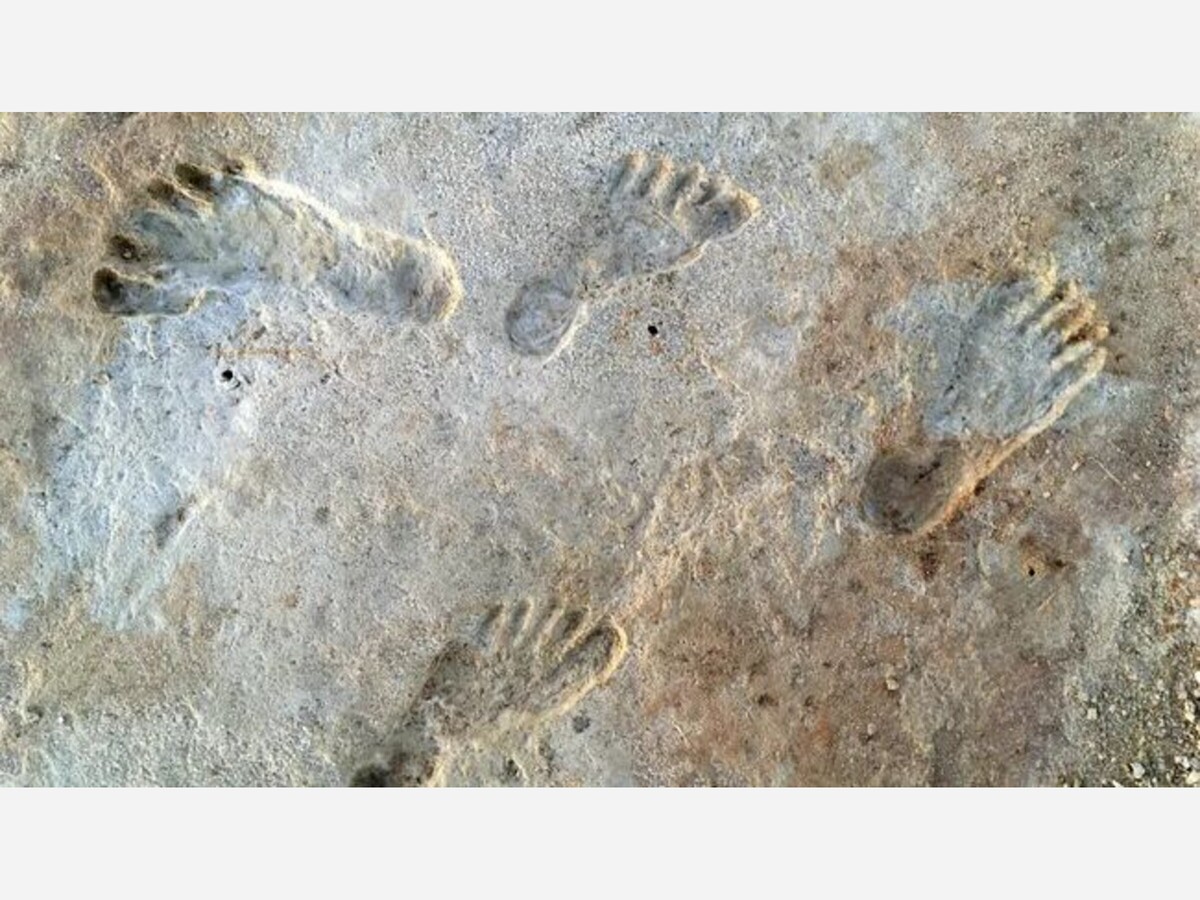Image


White Sands National Park in Alamogordo New Mexico is famous for its white gypsum sands that are perfect for sledding with the kids or families. One shouldn't miss the spectacular sunsets with the most colorful skies against the whitest of sands for the best photography ever. And of course, full moon evenings and watching for shooting stars there is no better place than White Sands National Park for clear skies and miles of darkness.
What many visitors don't realize is the importance of the White Sands National Park, Alamogordo and the Tularosa Basin of New Mexico to archaeologists. Every week of spring and summer archaeologists and archaeology students from around the world fill the local hotels and spends time digging, crawling and seeking answers to the past of human evolution.
A multidisciplinary team of scientists discovered a find that is of the oldest human footprints in North America. These fossilized prints were made between 23,000 and 21,000 years ago along the shores of an ice age lake that once filled the Tularosa Basin 13 miles from Alamogordo, New Mexico, in what is now White Sands National Park.
This finding fundamentally changed the timeline on North American human habitation – turning back the clock of human arrival in the Americas by nearly 10,000 years. Discoveries include "the White Sands trackway" – a series of tracks and footprints are called a trackway and shows that someone followed a sloth, purposely stepping in their tracks as they hunted. The White Sands trackway is now the oldest site in North America with direct evidence of humans and it significantly pushes back the arrival date of the first Americans.
These discoveries, whose creation and preservation were made possible by an abrupt climatic event, confirm that humans were present in North America for nearly two thousand years during the Last Glacial Maximum (LGM = ~26,500 to ~19,000 years ago), adding evidence to the antiquity of human colonization of the Americas and providing a temporal range extension for the coexistence of early inhabitants and Pleistocene megafauna.
A paper, “Evidence for humans in North America during the Last Glacial Maximum” was published among other research papers and provide significant details of this important discovery.
Things to know about the park. There is only one road in White Sands National Park and that road is Dunes Drive. This road is 8 miles long, one-way. It runs from the park entrance into the heart of the dune field. Along this road are trailheads, picnic areas, and sledding spots.
Most of the road is paved but the last 3 miles is a hard-packed gypsum sand road. It looks like the road is snow-covered but nope, that’s just sand. There may be some wash boarding on this section of road, but it is suitable for standard vehicles, motorcycles, RV’s and bicycles.
If you want to hike on the dunes but not go too far, this is a trail to consider. The Dunes Life Nature Trail is located right where the “good” dunes start.
On this nature trail, you will get to hike up and over the white sandy dunes. There is more plant life here than in the heart of the park, which gives this trail the name “Nature Trail.” Along the loop, numerous signs teach you about the plants and animals that thrive in this basin.
Go sledding on sand dunes as white as the snow…this is one of the best things to do in White Sands National Park. (Some of the area hotels like the Hampton Inn Alamogordo provide guest complimentary sleds for free to borrow and return to enjoy the park.)
All you need is a basic plastic disc sled and you are good to go. Bring your own or purchase one from the gift shop at the Visitor Center. Note: The gift shop is open from 9 am to 5 pm (double check hours on the official NPS website), so if you get into the park before 9 am, you will have to do some backtracking to get back here to purchase your sled.
Finally,
This is the most popular ranger-guided hike. On this short stroll, learn about the geology of the park and the plants and animals that live here. The stroll is timed to end at sunset. It lasts 45 minutes to one hour, it is free, and no reservation is required. Get tour times here.
Hike on the dunes at sunset with a park ranger. This tour is offered once a month from April through October. There is an additional fee for this tour and you can purchase your ticket in advance. Get the full details here.
Lake Lucero is the birthplace of the gypsum dunes. On this tour, learn how the white sands formed. This tour is offered once a month from November through March. There is an additional fee, and you can purchase your ticket in advance. Get the full details here.
Enjoy your stay in Alamogordo. learn and let live!